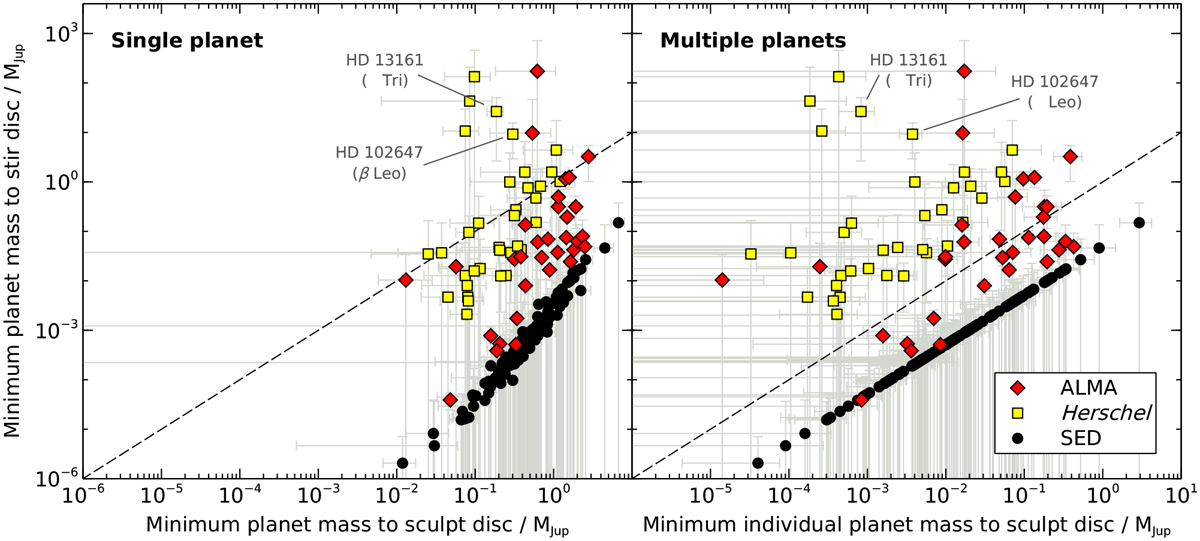Fig. 13

Download original image
Comparison of the planet masses required to stir and sculpt debris discs. The vertical axis shows the minimum planet masses required to stir each disc (Sect. 4.2). Horizontal axes show the minimum planet masses required to sculpt the inner edges of those discs (Sect. 3) if sculpting is performed by one planet (left plot) or by multiple, equal-mass planets (right plot). Symbols are the same as in previous figures, and the dashed lines denote 1:1 relations. If one planet sculpts each disc inner edge (left plot), then for almost all systems that planet could also stir the disc (either the sculpting planet mass is greater than that required for stirring, or the two are consistent to 1σ), The only exception is β Tri (HD 13161), which is a binary system where the binary could instead stir the disc (for the other labelled system, β Leo (HD 102647), we likely underestimate the disc inner edge and therefore overestimate the required stirring planet mass). Conversely, if multiple planets sculpt each disc (right plot), then for several systems the minimum-mass sculpting planets would be too small to stir those discs (to 1σ), some, but not all, of those discs could feasibly be self-stirred, so either the planets in those systems are more massive than required by the multi-planet sculpting model, or disc sculpting and stirring are performed by different entities. We note that the stirring planet masses derived from SEDs of unresolved discs (black circles) are conservative lower limits since these discs were assumed to have zero width for this analysis; in this case, the planet masses required for sculpting and stirring have similar or identical dependences on system parameters, resulting in the tight relationships between the two. As on previous plots, the large uncertainties are due to the strong dependences of Eqs. (15) and (23) on disc edge locations.
Current usage metrics show cumulative count of Article Views (full-text article views including HTML views, PDF and ePub downloads, according to the available data) and Abstracts Views on Vision4Press platform.
Data correspond to usage on the plateform after 2015. The current usage metrics is available 48-96 hours after online publication and is updated daily on week days.
Initial download of the metrics may take a while.


